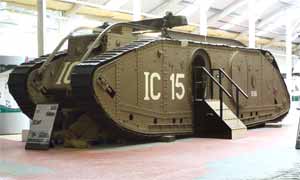 |
 |
They have an entire
building filled with these WWI monsters. One of the more interesting
facts about them is that more troops died from carbon monoxide
poisoning in them than from combat . Click
Here. |
Right after WWI the
UK government gave a group of WWI tank designers one more chance
to catch up with the times. This thing is HUGE. It's the heaviest
tank in the museum. The top of the treads are head-high. TOG
II stands for The Old Guys . Click
Here |
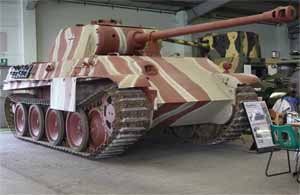 |
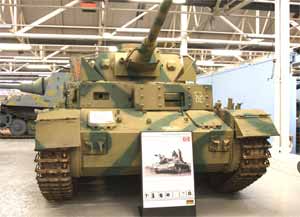 |
Probably the best
tank of WWII, the German Panther. This one is brand new, having
been assembled by the Germans under the
watchful eyes of the Allies after they captured the factory. Click
Here. |
The Panzer IV is one
of the rarest machines on Earth and one of my favorites. If
you run across one at your local used tank lot be sure to drop
me a line, would you? Thanks. Click
Here. |
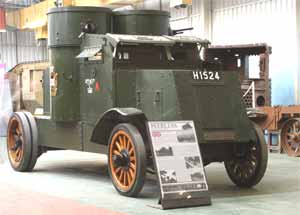 |
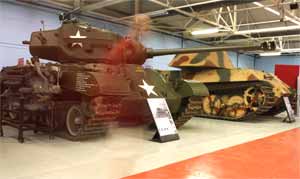 |
| Tanks started as various versions of armored
"cars" and trucks like this Peerless . The Tank Museum
has a wide ranging inventory of armor from that pre-tank period. Click
Here. |
The US Pershing is often mentioned as "best
WWII tank" along with the German Panther. Notice the ghost of
someone walking through a ten second exposure. Click
Here. |
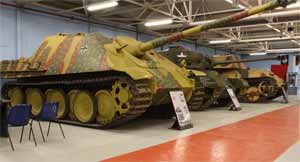 |
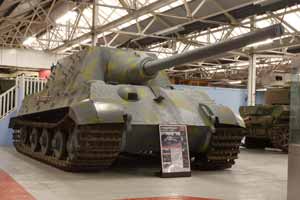 |
The German Jadgpanther,
essentially a Panther fitted with a more powerful gun and lighter
armor so it could move quickly and kill tanks. This clearly
shows the muliple road wheels designed to spread the weight
and make German tanks better on soft ground. Click
Here. |
Same thing done on
a Tiger chassis: Jadgtiger. This one appears to be missing
the outside roadwheels, which were often removed to install
a narrower track for shipping. Click
Here. |
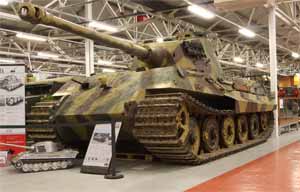 |
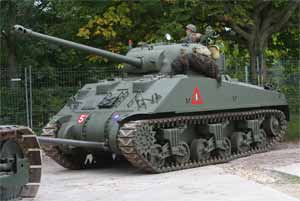 |
The legendary King
Tiger. like the smaller Tiger, very few were actually built
and the reliability was poor, but they scared the bejeesus
out of other tankers as they could blow a hole right through
virtually any Allied tank. Again, outside roadwheels are not
installed. Note the steel R/C model. It's from Armor
Tek. About $6.5k. It's gorgeous. Click
Here. |
UK modification on
the Sherman, the Firefly, mounting a bigger, more powerful
gun. The armor was still easily penetrated by most later German
armor, but at least with the 17-pound gun, it could fight back
more effectively. The Germans called the Shermans "Ronsons"
after the lighter because they were so easy to set on fire. Click
Here. |
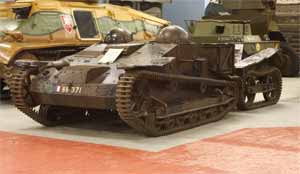 |
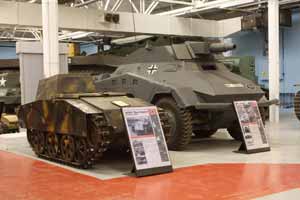 |
The French actually
had some pretty good tanks, but this isn'tone of them. More
of a scout vehicle. Notice the tracked trailer. Note the tiny
vision slots in the "bubble" turrets. The Tank Museum is loaded
with unusual vehicles like this one. Click
Here. |
It's hard to believe
how many different armored vehicles the Germans produced. And
The Tank Museum seems to have them all. I'd love to show up
at the drive in Saturday night with this little thing. Click
Here. |
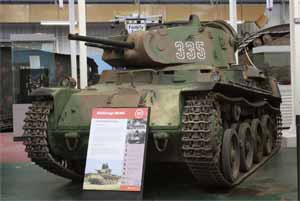 |
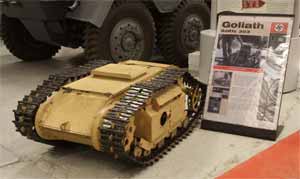 |
In theory, this is
a Swedish tank, but it's hard to not notice the Panzer I and
II similarities. That's because the Germans were building
research tanks in Sweden to circumvent the Treaty of Versaille
that effectively stopped military production. Click
Here. |
A remote control bomb
and cable carrier. This would be ideal for your next R/C meet. Click
Here. |
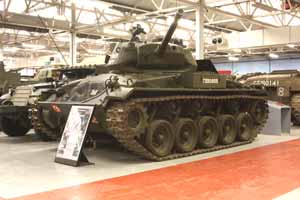 |
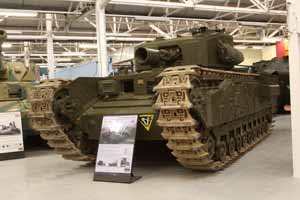 |
The Chaffee is a gorgeous
little US light tank that came in at the end of the war to
replace the Stuart. Very few have been located and restored. Click
Here. |
A Brit Chruchhill
Mk. III. You'll notice that most of their WWII tanks were chunkier
than those from the US but they usually mounted bigger guns. Click
Here. |
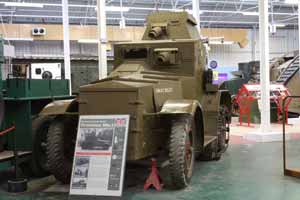 |
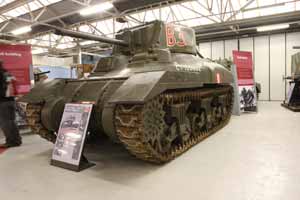 |
The Brits saw a need
for amored vehicles long before we did and tried everything. Click
Here. |
A Crusader. Read the
sign and you'll know as much as I do about it. Click
Here. |
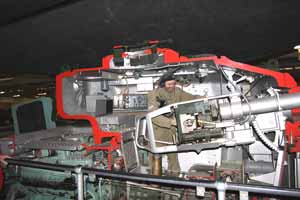 |
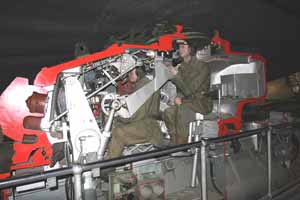 |
How would you like
to be the one to have to cut a tank in half lengthwise? They
had lots of educational stuff like this. It is matched with
a big screen video presentation. Very effective. Click
Here. |
Here's the other side.
I couldn't leave you with just half a tank, now could I? Click
Here. |
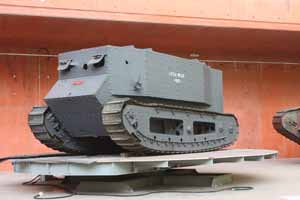 |
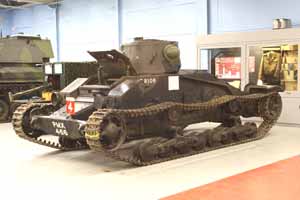 |
| This is Little Willie, supposedly the world's
first tank, 1915, UK. Click
Here. |
If there is a mechanical representation
of the word "gauky" this has to be it. Matilda I, 1935. Click
Here. |






















